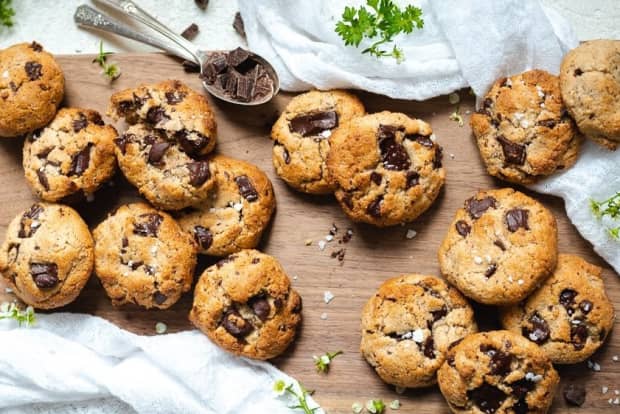This post was originally published on this site

MarketWatch photo illustration/iStockphoto|, Global Resources Direct
Tom O’Brien has been in the food commodity industry for 13 years, He’s seen plenty of trends come and go — but one that doesn’t appear to be fading any time soon is people flocking to alternative types of flours.
“Our phone has been ringing off the hook from people in the Caribbean trying to get gluten-free flour,” O’Brien, the president and co-founder of Global Resources Direct, a Chicago-based food commodity exporter, importer, supplier and trading company.
At the start of the pandemic, it made sense that people were turning to non-traditional forms of flour such as buckwheat, almond, oat and even banana when the baking craze took off, creating shortages of traditional wheat flour, he said.
O’Brien assumed that eventually the supply chains would catch up to meet the intense demand for traditional wheat flour and people would go back to cooking and baking with it. But that’s hardly been the case.
So far this year, sales of almond flour and oat flour are up 110% and 103% respectively compared to the first 10 months of last year, according to data O’Brien shared with MarketWatch. Organic coconut flour and green banana flour have also seen a rise in demand and are up 78% and 69% so far this year compared to last.
Data Nielsen NLSN, +5.34% provided to MarketWatch confirms a similar trend.
In June this year dollar sales of sweet potato flour were more than 100% higher than the same month last year, the highest they were during the pandemic.
By contrast, oat flour experienced the highest demand in April when dollar sales were 184% higher than March of 2019. By September, fewer Americans purchased oat flour but compared to September of 2019, dollar sales were 72% higher, according to Nielsen data.
Matt Cox, vice president of marketing at Bob’s Red Mill, a flour company that makes several types of alternative flours said that “orders on our website have more than doubled over the past few months.”
Cox added that it has been “busier than the winter holiday season, which is usually when we see the most volume in terms of orders and website traffic.”
Gluten-free and keto diets may also be driving consumers to purchase alternative flours
While many Americans have put their dieting on the back burner during the pandemic, people that have stuck with diets are predominantly on keto and gluten-free diets, according to an August report by the NPD Group, a market research firm based in Port Washington, New York.
“Nutrition programs, like keto and gluten-free, offer a clear road map that provide consumers a sense of control,” said Darren Seifer, NPD’s food and beverage industry analyst. The keto diet, short for ketogenic, is a popular weight loss method that calls for a limited intake of carbohydrates and a high protein intake.
“On the other hand, indulgent comfort foods provide an escape from increased stress levels and offer a simple splurge that is popular during challenging times,” the NPD report noted. “Both paths are coping mechanisms to managing stress and disruption.”
“ ‘Flour can be made from anything and in plenty of other cuisines flour is not wheat flour. It comes from things like cassava, coconut, potato and corn’ ”
“When you’re thinking about eating gluten-free or going on a keto diet, that really forces people to rethink what flour is,” said Epicurious site director, David Tamarkin.
“In North America for a long time when people thought of flour, they just thought flour with wheat flour. But flour can be made from anything and in plenty of other cuisines flour is not wheat flour. It comes from things like cassava, coconut, potato and corn.”
Both Tamarkin and Hannah Sunderani, who runs a plant-based food blog named Two Spoons, have noticed that recipes posted on their respective websites which are either gluten-free or keto diet-friendly have seen an uptick in traffic during the pandemic.
Earlier this year, when Sunderani posted a photo on Instagram of a new shortbread cookie recipe using almond flour, she said only 625 people saved it to their Instagram accounts. Typically people save images she posts through the app so they can later refer back to them and look up the recipe on her blog.
In April, a vegan chocolate chip cookie that also called for almond flour as well as oat flour was saved by more than 2,800 people.

The finished result of Hannah Sunderani’s vegan chocolate chip cookie recipe.
twospoons.ca
“A lot of people are requesting alternative types of flours [in recipes], especially things like almond flour or any type of substitute that’s gluten-free,” she said. “There has definitely been a rise in this type of eating.”
Overall, web traffic on her site was 65% higher in April than it was in February.
Advice for cooking/baking with alternative flours for the first time
Don’t try multiple types of alternative flours at once, Sunderani told MarketWatch.
Not only can these flours be costly, but focusing on one flour at a time will allow you to distinguish between the taste and texture of various alternative flours, she said.
One inexpensive way to start experimenting with oat flour is by making it yourself. All it really takes, Sunderani said, is a bag of oats. You can “throw them in a food processor or high-speed blender for a couple of minutes.”
“I would always recommend that people seek out classic recipes or traditional dishes that use alternative flours when starting off,” Tamarkin said. “It would be a disaster if you tried to make sourdough bread with almond flour.
Two of his personal favorite recipes on Epicurious’ site that call for alternative flours are a cromlet (a chickpea flour-based omelet) and a mochi cake, which uses rice flour.
“Once you have familiarity with the flour you can start incorporating it into recipes that don’t necessarily call for it in little amounts.”

